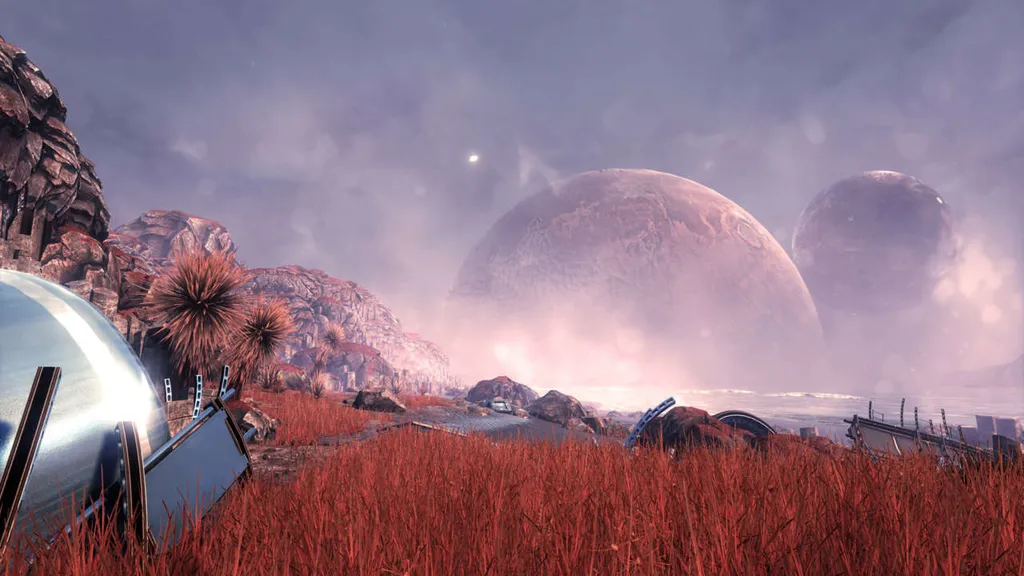The Solus Project from Teotl Studios and Grip Digital just recently released last week on PS4. Both the PC and console versions include VR support, making it one of the first fully-featured survival simulator experiences with full VR support on all three major headsets: Rift, Vive, and PSVR.
With the game so fresh on people’s minds we reached out to the game’s chief creator, Sjoerd De Jong of Teotl Studios, about the development process and what it was like porting a game this complex over to VR devices.
UploadVR: How do you think the survival mechanics transferred to the VR platform? Was it difficult adapting the UI and other systems to work from a VR headset POV?
Sjoerd De Jong: It certainly took quite a bit of effort. UI was a challenge indeed, but so was fighting motion sickness, and ensuring everything is more realistically interactive while in VR. The most challenging has probably been the motion sickness issue. A problem that the industry struggles with in general. For our survival game with large explorable worlds the problem was more complex though. One of the ways to make someone less likely to get motion sick is to scale down the walking speed a lot. The slower and more stable you move forward, the less likely you will get sick. The default VR walk speed is considerably slower than the non-VR version. But the slower you walk, the longer it means it will take to go from A to B, which means that you will need more resources such as water and food to bridge the same distances in VR as in non-VR. In response to that the game lets you configure the difficulty freely at any time, and in VR the difficulty automatically scales down some.
UploadVR: What about The Solus Project do you think makes it fit VR so well?
Sjoerd De Jong: The Solus Project is an experience on an alien planet. The atmosphere and immersion are a major part of that experience. And VR amplifies those two things greatly. It really makes you be there on that planet. I remember that during the first few proper VR playthroughs I did in my own game I spent most of my time just staring at rocks, alien plants, the stars, caves and so on. Taking it all of it in awe how I was really there on that other planet, all on my own. The Solus Project is not a combat or action game, but about the story that you go through as the sole survivor of a crash all alone on those lonely beaches and caves. VR is absolutely ideal to portray that. And all that aside I also want to point out that the game is not a short demo that relies on the novelty of VR. It is a full sized 12-16 hour story driven experience. There is a lot of value to be had in a game this big in VR.
UploadVR: What’s it like to create a game with a strong VR-focus that still appeals to a market wanting to play without?
Sjoerd De Jong: The first challenge we faced was that development on the game started in July 2013. VR was still in its early days back then, so we had to develop the game not just for VR and non VR, but also try and guess what the consumer version of VR might actually be like one day. We approached it by focusing entirely on the non VR version first for about a year and a half, but by taking VR into account for all design decisions that were made. For example we deliberately avoided adding a complex HUD exactly due to VR compatibility. This allowed us to focus all out on first getting the core mechanics up and running, the type of mechanics and graphics you would need in the game regardless of how you play it, and then once that was stable in the mean time VR had matured considerably, and we could begin implementing it.
UploadVR: What are some of the best practices you learned for porting a non-VR game to VR?
Sjoerd De Jong: Definitely give the process time. It goes much further than just flipping a few switches somewhere. VR is about immersion so think of what will help that immersion. We have a pocket computer in the game that essentially acts as a HUD, and at first we had buttons on the various VR controllers that would then activate a menu item on this computer, just like the non-VR version works, but players want immersion. That means the ability to actually press a button on this pocket computer. So when in VR, the pocket computer model automatically exchanges itself for a different version, one with large and obvious interactive buttons. Make sure as much of the content as possible can be interacted with in a realistic way, and does not just rely on pressing a button on the controller.
You can find out more information about and purchase The Solus Project over on Steam for PC, Rift, Vive, and OSVR at the price of $19.99, as well as on the PSN Store for the same price.
Let us know what you think of survival sim games in VR, and The Solus Project specifically, down in the comments below!


























